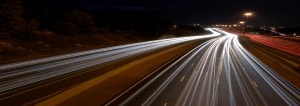Let there be lighting
We’ve now updated the British Standard that supports use of the European series on road lighting. This blog post considers the many facets of road lighting and explains how the revised BS can help those tasked with designing lighting schemes.

Why do we need road lighting? Anyone involved in road lighting design knows the answers. It contributes to traffic safety because good visibility will reduce night-time traffic collisions. Lighting can also play a role in traffic calming. It also helps pedestrians to navigate at night, to be more visible to other road users, to avoid hazards, recognize other pedestrians and feel more secure.
But beyond safety, lighting has wider social and economic functions. It can reduce crime and the fear of crime. It can contribute to the commercial and social utilization of town centres at night. It can play a significant role in improving the experience at tourist locations. There’s also an increasing emphasis on walking and cycling in transport and environment policies, and therefore on the quality of walking and cycling routes. Lighting can contribute to creating an environment that is more conducive for pedestrians and cyclists to use and thereby contribute to improving people’s health.
Dealing with complexity
Given all the possible uses and requirements, road lighting design is complicated, even at the most basic level. For instance in most lighting scenarios the goal is to illuminate objects in the foreground. Yet for road lighting that’s generally turned on its head because good visual conditions for drivers consist of lighting which lights the road surface and reveals surrounding objects in silhouette.
So lighting design has to deal with the health and safety of road users first and foremost, and then other considerations come into play. These include maintenance, energy and lifecycle costs as well as the differing requirements of different road types, the evolution of lighting technologies and lighting control and the need to avoid light pollution.
To help local authority highway professionals as well as those involved in lighting design or manufacture to deal with the complexity, we’ve published BS 5489-1:2020 Code of practice for the design of road lighting. Lighting of roads and public amenity areas.
Appropriate and justifiable
BS 5489 has two parts. Part 1 has just been revised. Part 2 covers the lighting of tunnels and was last revised in 2016.
BS 5489-1 consists of guidance and recommendations intended to support use of the four-part BS EN 13201 series of European standards on road lighting. It gives recommendations on general principles and aesthetic and technical aspects. It also gives advice on operation and maintenance.
The standard’s overall aim is to promote a wider understanding of the lighting of roads and public amenity areas and to give people robust guidance on the design decisions that they need to take. It’s not prescriptive. The intention is that its recommendations will simple drive designers towards designs that are appropriate and justifiable.
BS 5489-1 has now undergone a full technical revision and has been updated. It’s now fully compatible with the 2015 revisions to the BS EN 13201 series that provide additional guidance on appropriate lighting levels, glare and colour appearance of lighting designs.
In addition, for those contemplating developing “Smart Cities” or “Connected Places” and using the street lighting network as part of the smart communication network infrastructure, the revised standard now includes guidance on how to ensure that the lighting system is compatible with potential future requirements, plus new guidance is provided for lighting design when located within a “smart city” environment or when co-located with electric vehicle (EV) charging points.
BS 5489 has a long history: its first incarnation appeared way back in 1952. Nearly 70 years later it’s hoped that the 2020 version will continue to help designers achieve safe and successful road lighting designs.